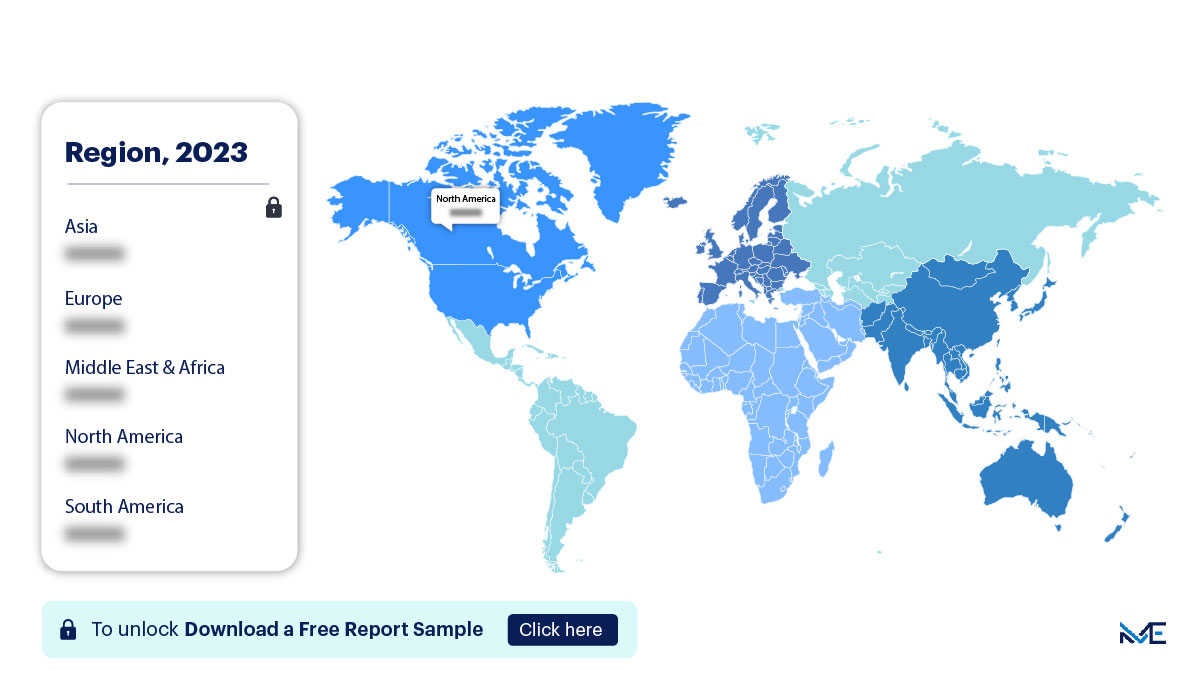
Contract Textile Market Analysis By Application (Hospitality, Healthcare, Education, Office Spaces, Others), By Type (Upholstery Fabrics, Curtains and Draperies, Bedding Linens, Wall Coverings, Others), and By Region Forecast to 2032
- Report ID: ME_00132394
- Format: Electronic (PDF)
- Publish Type: Publish
- Number of Pages: 250
Market Snapshot
| Study Period | 2019-2032 |
| Base Year | 2023 |
| Forcast Year | 2023-2032 |
| CAGR | 7.82 |


Gain accurate insights regarding the negative impacts of COVID-19 on all markets and industries
Download Sample PdfReport Overview
The Contract Textile Market size is projected to grow at a Compound Annual Growth Rate (CAGR) of 6.3% from 2023 to 2032. Several factors contribute to the growth of this market, including the rising demand for interior design and furnishing in commercial spaces, the expansion of the hospitality and healthcare sectors, and the focus on sustainable and durable textile solutions. Contract textiles encompass a wide range of fabrics and materials used in commercial and institutional settings, including offices, hotels, healthcare facilities, and educational institutions. These textiles are designed to meet specific performance and safety standards while also offering aesthetic appeal.
Contract Textile Market Overview:
Drivers:
One of the primary drivers of the contract textile market growth is the increasing demand for interior design and furnishing in commercial spaces. Businesses and institutions are recognizing the importance of creating attractive and functional environments to enhance the overall experience of employees, customers, and visitors. As a result, there is a growing need for contract textiles that offer durability, aesthetics, and ease of maintenance.
Moreover, the expansion of the hospitality and healthcare sectors contributes significantly to the market's growth. Hotels, restaurants, hospitals, and healthcare facilities require a wide range of contract textiles, including bedding, curtains, upholstery, and healthcare-specific fabrics. The emphasis on guest comfort, patient well-being, and infection control drives the demand for high-quality contract textiles.
Trends:
A notable trend shaping the contract textile market growth is the adoption of sustainable and eco-friendly textile solutions. As environmental consciousness grows, businesses and institutions are seeking textiles that are produced using eco-friendly materials, processes, and dyes. Sustainable textiles may include recycled fibers, organic cotton, and low-impact dyes, among other environmentally friendly practices.
Furthermore, the integration of smart textiles into the contract textile industry is gaining momentum. Smart textiles can incorporate technology for functions such as temperature regulation, lighting control, and even health monitoring. These innovative textiles offer enhanced functionality and comfort in commercial and institutional settings.
Restraints:
One of the key challenges facing the contract textile market is the price sensitivity of customers. Budget constraints can limit the adoption of premium and high-end contract textiles, especially in sectors such as education and government. Price-sensitive customers may opt for lower-cost alternatives, affecting the market for premium and luxury contract textiles.
Additionally, regulatory compliance and safety standards for contract textiles can be complex and vary by region and application. Meeting these standards requires rigorous testing and certification, which can add to the overall cost and time-to-market for contract textile manufacturers.
Contract Textile Market Segmentation By Application:
The hospitality sector is poised for significant growth within the contract textile market. Hotels, restaurants, and resorts require a wide range of textiles, including bedding, curtains, upholstery, and table linens. The demand for contract textiles in the hospitality industry is driven by the need to create inviting and comfortable environments for guests while also ensuring durability and ease of maintenance.
Moreover, the healthcare sector represents another vital application area for contract textiles. Healthcare facilities require specialized textiles that meet stringent infection control and safety standards. These textiles may include antimicrobial fabrics, flame-resistant materials, and textiles designed for patient comfort.
Contract Textile Market Segmentation By Type:
The upholstery fabrics segment is expected to witness substantial growth in the market. Upholstery fabrics are used for covering furniture, including chairs, sofas, and benches, in commercial and institutional settings. These fabrics are chosen for their durability, aesthetics, and ease of cleaning, making them essential in various sectors, such as offices, healthcare facilities, and restaurants.
Furthermore, the curtains and draperies segment is gaining prominence, particularly in the hospitality industry. Contract textiles for curtains and draperies are selected based on their ability to control light, provide privacy, and enhance the overall interior design of hotels and restaurants.
Regional Overview:

Download the report summary now!
Request pdf Sample

Download the report summary now!
Request pdf SampleNorth America is anticipated to contribute significantly to the growth of the global contract textile market during the forecast period. The region's robust hospitality and healthcare sectors, along with a focus on interior design and aesthetics, drive demand for contract textiles. The United States, in particular, has a thriving contract textile industry, with numerous manufacturers and suppliers catering to the needs of various commercial sectors.
Additionally, Europe is a prominent market for contract textiles, driven by stringent quality and safety standards. European businesses and institutions prioritize textiles that meet eco-friendly and sustainability criteria, making the region a hub for sustainable contract textiles.
In 2020, during the COVID-19 pandemic, the global contract textile market faced challenges related to supply chain disruptions and shifts in consumer behavior. However, as businesses and institutions adapt to the new normal, the demand for contract textiles is expected to rebound, driven by the need for safe, comfortable, and aesthetically pleasing commercial spaces.
Contract Textile Market Customer Landscape:
The contract textile market analysis encompasses the entire adoption lifecycle, ranging from early adopters to late-stage adopters. It also delves into regional variations in adoption rates and key purchase criteria, aiding companies in developing effective growth strategies.
Major Contract Textile Market Companies:
Market players are implementing various strategies, such as research and development investments, strategic partnerships, and product innovations, to strengthen their presence in the market.
- Herman Miller, Inc.
- Interface, Inc.
- Maharam Fabric Corporation
- Milliken & Company
- Steelcase Inc.
- Sunbrella (Glen Raven, Inc.)
- The HON Company
- Tarkett S.A.
- Ultrasuede (Toray Industries, Inc.)
- Unika Vaev (HBF Textiles)
Qualitative and quantitative analyses of these companies provide insights into their competitive landscape, strengths, and weaknesses, enabling clients to navigate the dynamic business environment effectively.
Segment Overview:
The contract textile market report offers revenue forecasts at the global, regional, and country levels, along with an analysis of trends and growth opportunities from 2019 to 2032.
Application Outlook (USD Million, 2019 - 2032):
- Hospitality
- Healthcare
- Education
- Office Spaces
- Others
Type Outlook (USD Million, 2019 - 2032):
- Upholstery Fabrics
- Curtains and Draperies
- Bedding Linens
- Wall Coverings
- Others
Geography Outlook (USD Million, 2019 - 2032):
- North America
- The U.S.
- Canada
- Europe
- U.K.
- Germany
- France
- Rest of Europe
- APAC
- China
- India
- South America
- Brazil
- Argentina
- Chile
- Middle East & Africa
- Saudi Arabia
- South Africa
- Rest of the Middle East & Africa
RESEARCH METHODOLOGY
A research methodology is a systematic approach for assessing or conducting a market study. Researchers tend to draw on a variety of both qualitative and quantitative study methods, inclusive of investigations, survey, secondary data and market observation.
Such plans can focus on classifying the products offered by leading market players or simply use statistical models to interpret observations or test hypotheses. While some methods aim for a detailed description of the factors behind an observation, others present the context of the current market scenario.
Now let’s take a closer look at the research methods here.
Secondary Research Model
Extensive data is obtained and cumulated on a substantial basis during the inception phase of the research process. The data accumulated is consistently filtered through validation from the in-house database, paid sources as well reputable industry magazines. A robust research study requires an understanding of the overall value chain. Annual reports and financials of industry players are studied thoroughly to have a comprehensive idea of the market taxonomy.
Primary Insights
Post conglomeration of the data obtained through secondary research; a validation process is initiated to verify the numbers or figures. This process is usually performed by having a detailed discussion with the industry experts.
However, we do not restrict our primary interviews only to the industry leaders. Our team covers the entire value chain while verifying the data. A significant number of raw material suppliers, local manufacturers, distributors, and stakeholders are interviewed to make our findings authentic. The current trends which include the drivers, restraints, and opportunities are also derived through the primary research process.
Market Estimation
The market estimation is conducted by analyzing the data collected through both secondary and primary research. This process involves market breakdown, bottom-up and top- down approach.
Moreover, while forecasting the market a comprehensive statistical time series model is designed for each market. Macroeconomic indicators are considered to understand the current trends of the market. Each data point is verified by the process of data triangulation method to arrive at the final market estimates.
Final Presentation
The penultimate process results in a holistic research report. The study equips key industry players to undertake significant strategic decisions through the findings. The report encompasses detailed market information. Graphical representations of the current market trends are also made available in order to make the study highly comprehensible for the reader.
Personalized Business Report Tailored to Your Requirements
- Our expert analysts collaborate directly with you to comprehend your specific needs.
- Get data on regions, segments, competitors, and vendors of your choice.
- Information is presented in alignment with your exact preferences and formatting.
Free Sample Report
"Find new revenue generation opportunities"
